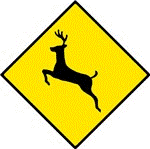United States Department of Agriculture, National Wildlife Research Center: Symposia

Human Conflicts with Wildlife: 2002 Symposium
Date of this Version
August 2000
Abstract
An a priori approach to examining the economics of performing management activities to reduce agricultural and resource damage by wildlife is described. Computer spreadsheet procedures are used to derive response surfaces of potential net savings and benefit:cost indices for selected crop- or resource-protection activities. Tabular and graphical displays of these indices afford decision-making aids for wildlife-damage interventions. An example based on the use of an acute rodenticide, zinc phosphide (Zn3P2), for vole (Microtus spp.) control in alfalfa (Medicago sativa) is described. Iterative calculations were derived for 1,260 possible combinations of 3 field-size, 6 crop-loss, 7 bait-effectiveness, and 10 application-fee variables. Average 1998 USDA alfalfa yield and price data (7.77 Mton•ha-1 and US$ 100.33•Mton-1), plus commercial placebo- and Zn3P2-bait costs (US$ 0.42•kg-1 and US$ 2.73•kg-1), served as the point of comparison. Effects were transitive, with greater net savings and benefit:cost ratios linked with larger field-size, crop-damage and bait-effectiveness variables, but decreased bait-application fees. Potential net savings were essentially negative when damage was <10%. Minimum and maximum benefit:cost ratios were 0.40 and 6.45; ratios ≥ 2.0 occurred typically when damage was ≥ 15%. The utility of the illustration and the approach are discussed.

